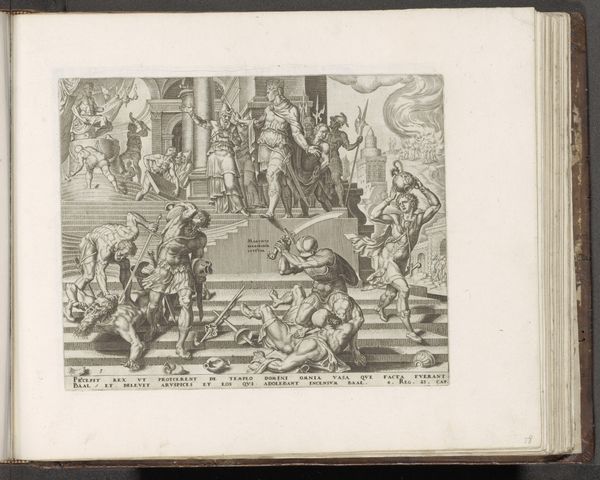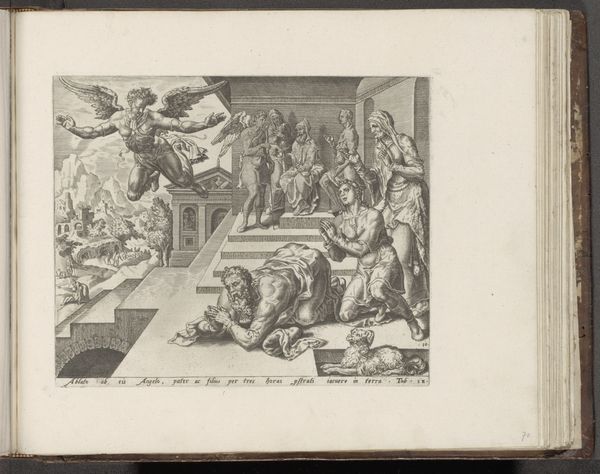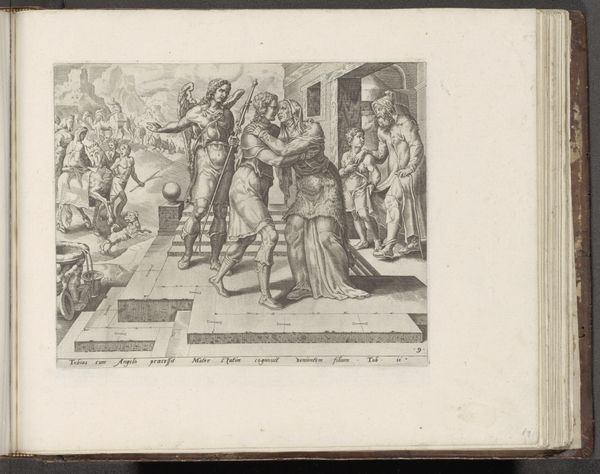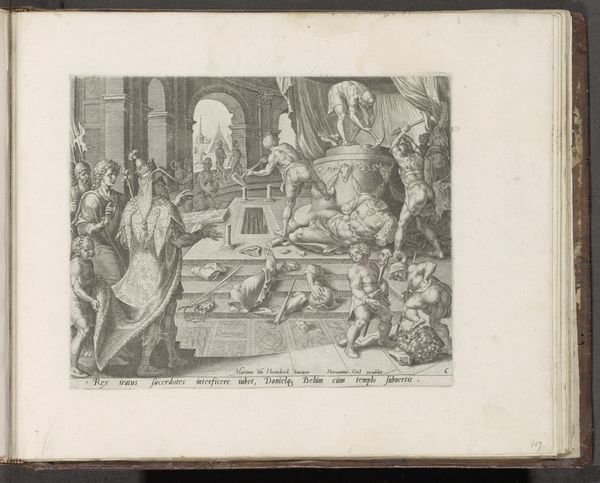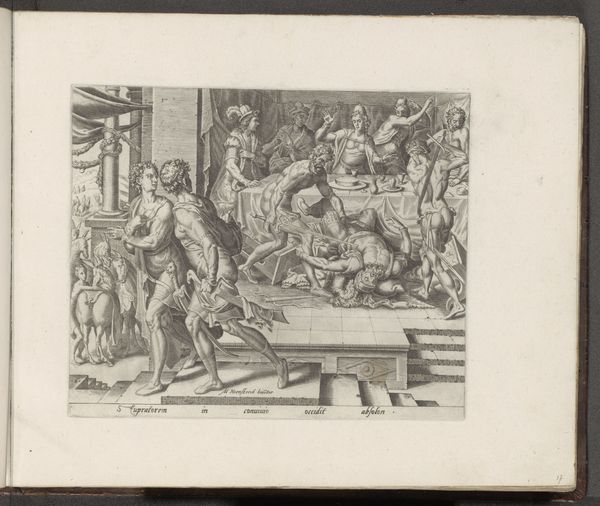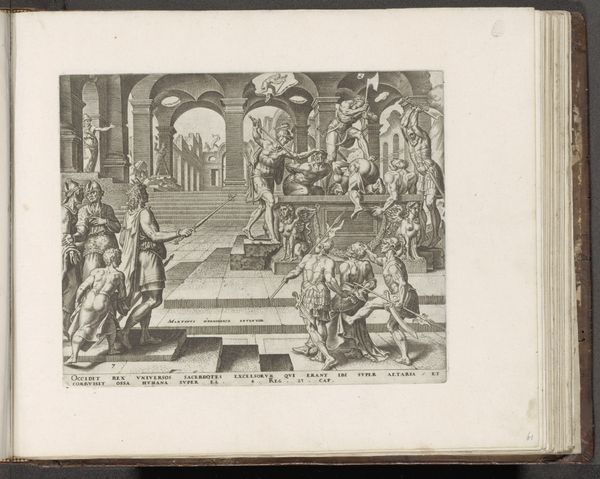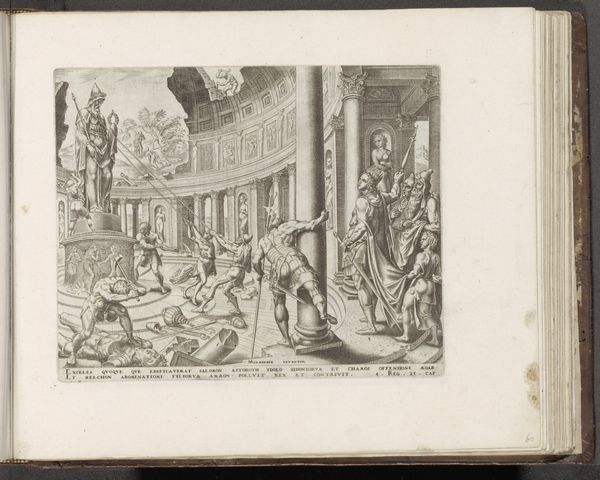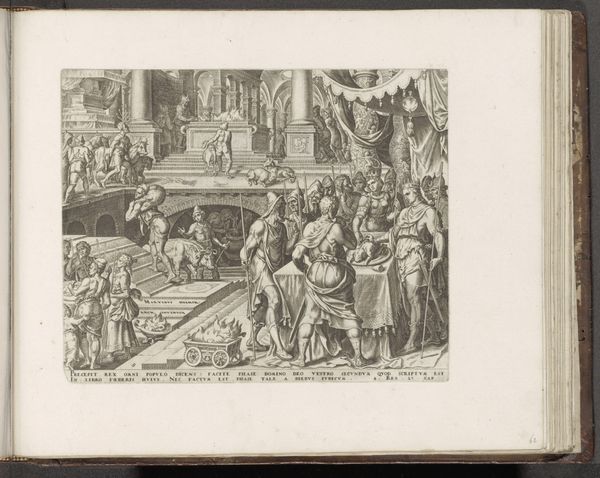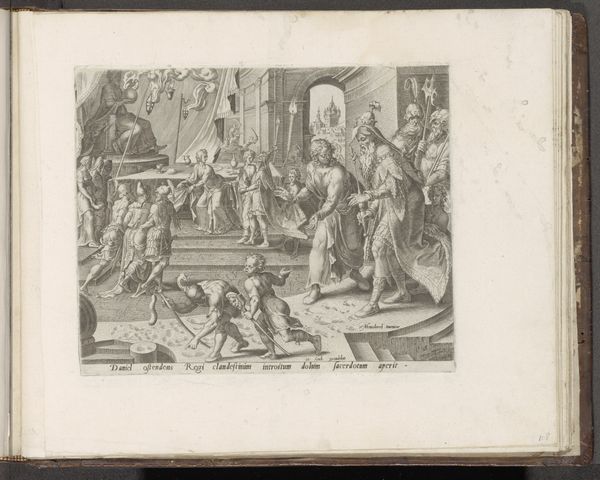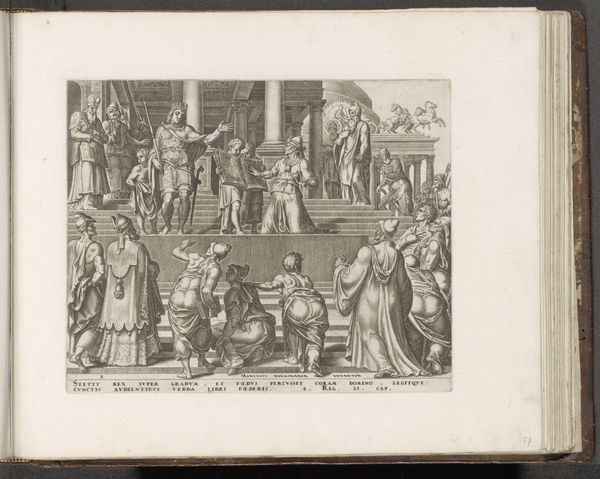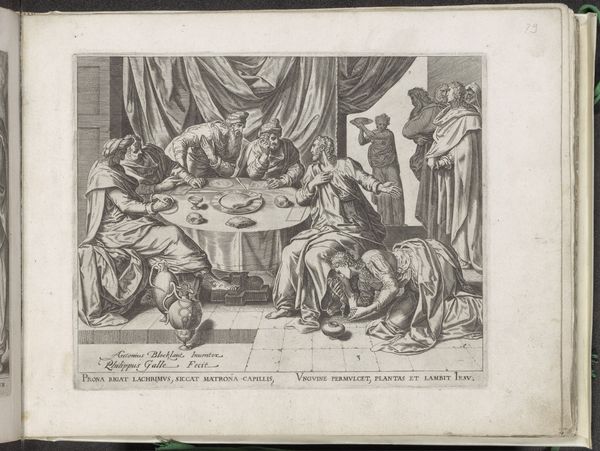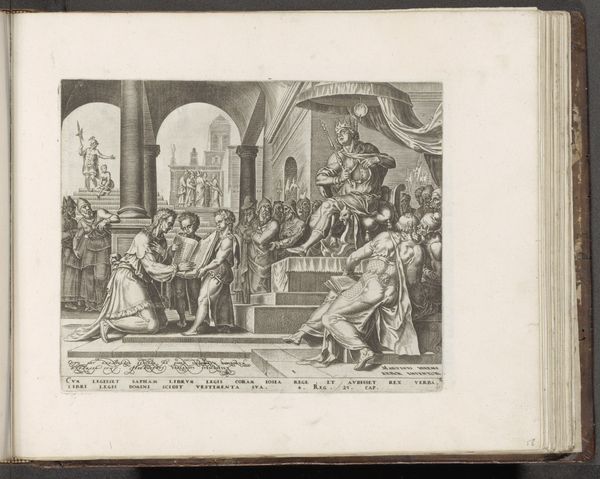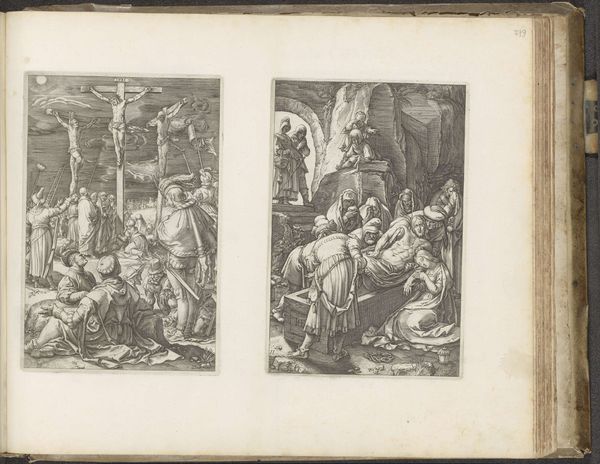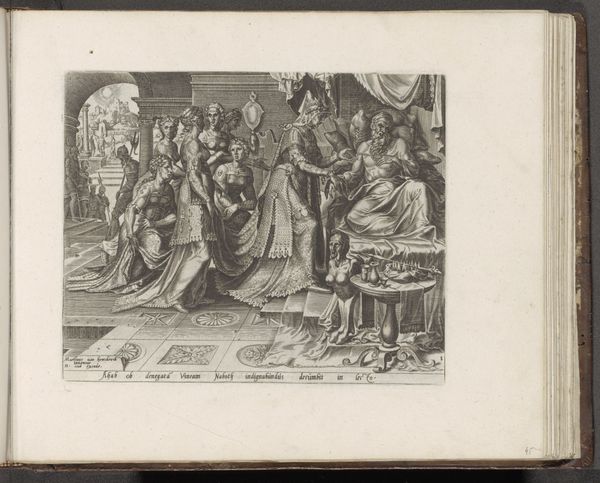
print, engraving
#
aged paper
#
toned paper
# print
#
pen sketch
#
sketch book
#
mannerism
#
figuration
#
personal sketchbook
#
pen-ink sketch
#
pen work
#
sketchbook drawing
#
history-painting
#
sketchbook art
#
engraving
Dimensions: height 200 mm, width 248 mm
Copyright: Rijks Museum: Open Domain
Philips Galle made this print, Bels Priesters in de Tempel, in the 16th century, using an engraving technique. The visual impact of an engraving relies heavily on the way the artist manipulates the metal plate, using tools to cut lines into its surface. Galle would have employed burins and other specialized instruments, pushing them through the copper to create grooves. Ink is then forced into these lines, and the plate is pressed onto paper. The sharpness and precision of the engraved lines give the print its distinctive graphic quality, allowing for fine details and tonal variations to emerge. Engraving was a laborious and highly skilled practice. The act of cutting into the metal plate demands a degree of manual dexterity and control. But beyond the technical expertise, prints such as these also served a crucial role in disseminating knowledge and imagery at the time. They were a means of mass production and consumption, catering to a growing market for visual information. Paying attention to the intricate work involved and the print’s broader cultural context allows us to fully appreciate Galle's artistic achievement.
Comments
No comments
Be the first to comment and join the conversation on the ultimate creative platform.
